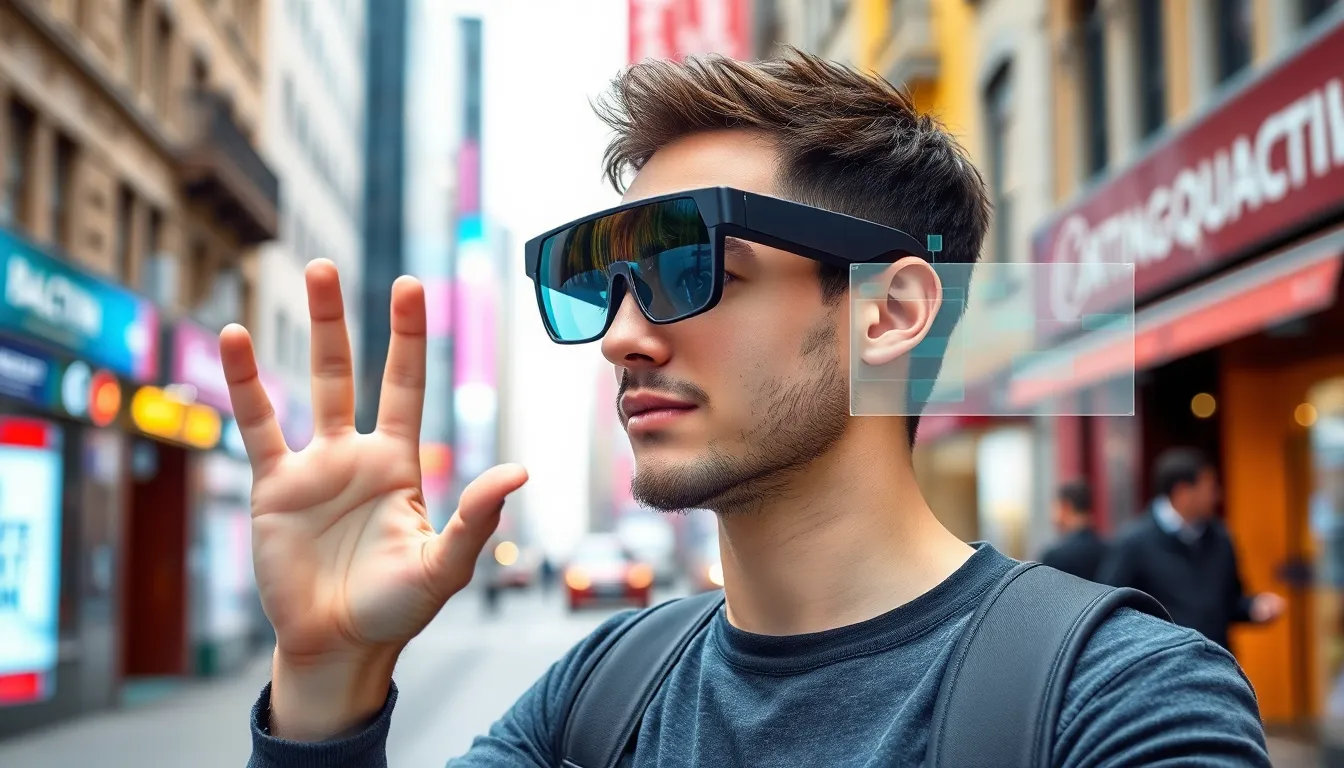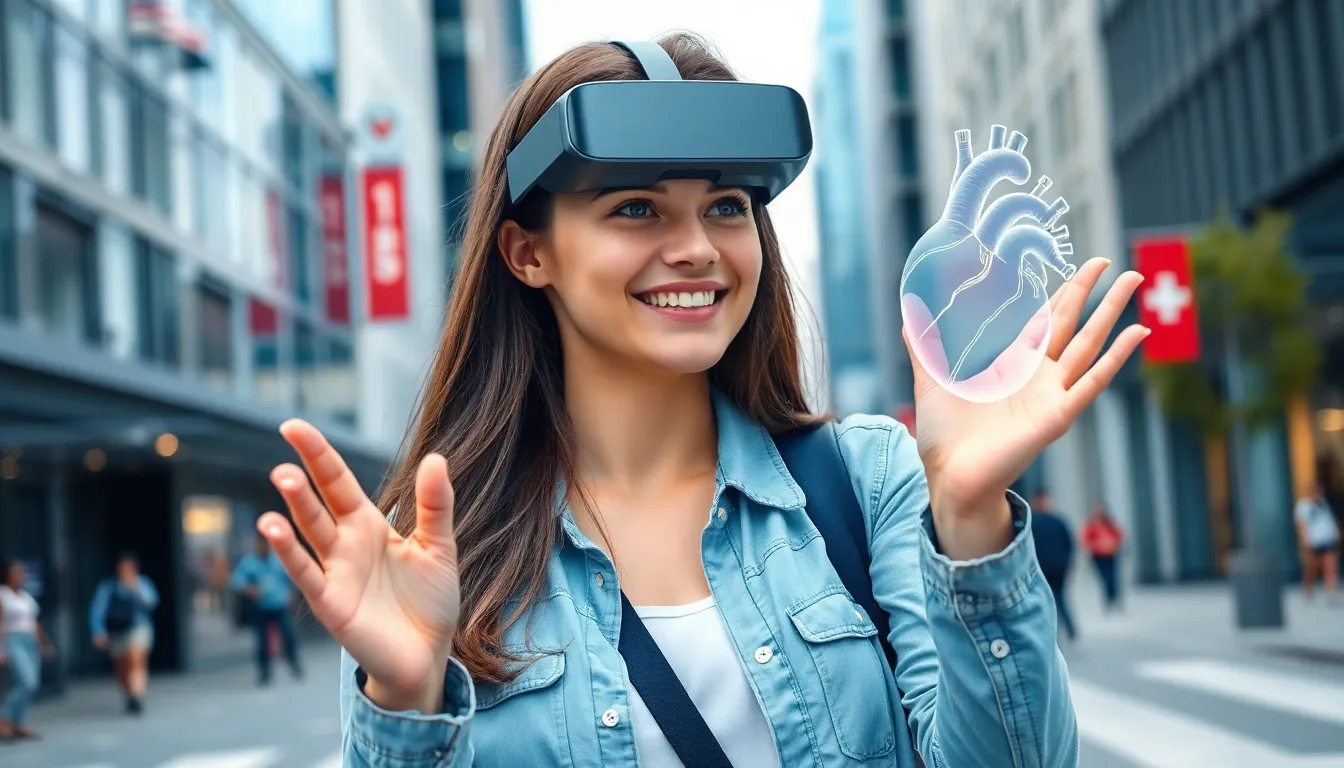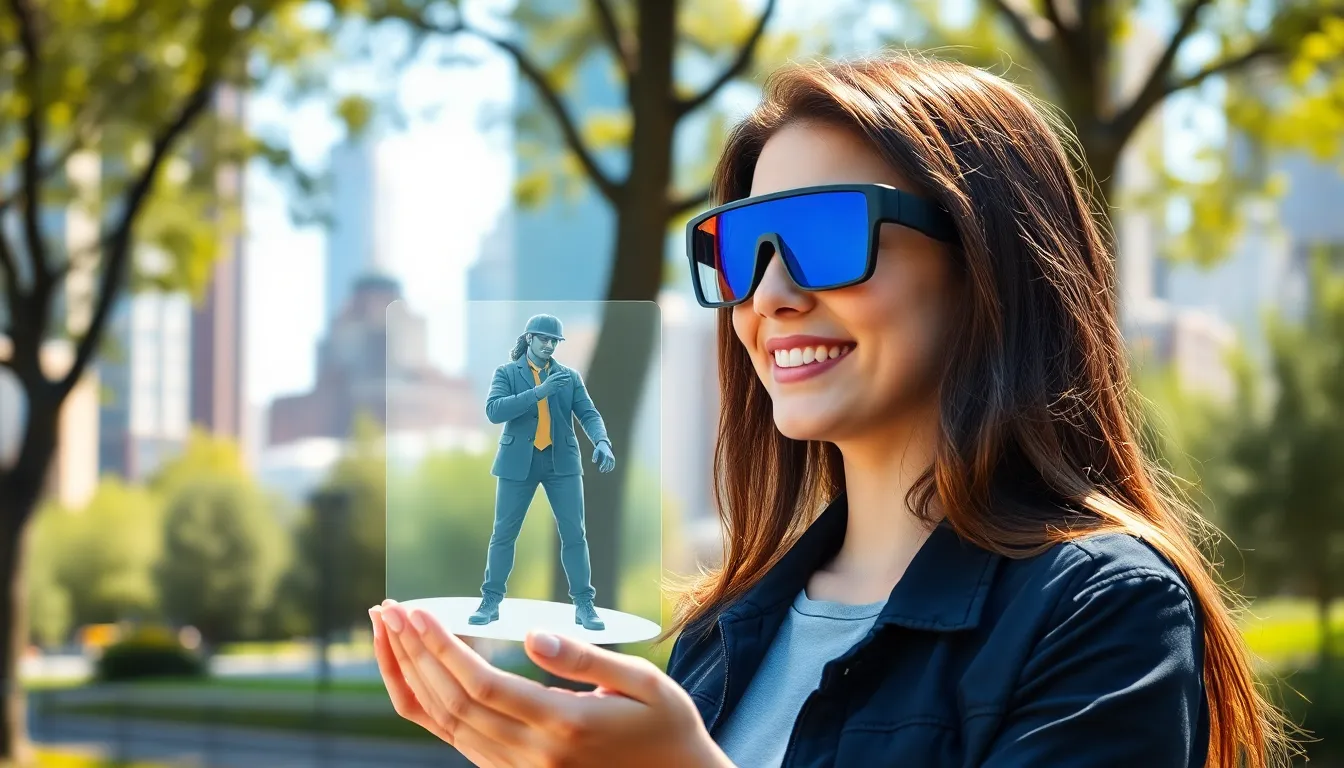Augmented reality (AR) smart glasses are transforming the way people interact with the world around them. By seamlessly blending digital information with the physical environment, these innovative devices offer a glimpse into the future of technology. From enhancing everyday tasks to revolutionizing industries, AR smart glasses are quickly becoming essential tools for both consumers and professionals.
As technology advances, the applications for AR smart glasses continue to expand. Whether it’s for navigation, gaming, or remote collaboration, these glasses are designed to enhance experiences and improve productivity. With major tech companies investing heavily in this space, the excitement surrounding AR smart glasses is palpable, promising a new era of connectivity and immersive experiences.
Table of Contents
ToggleOverview of AR Smart Glasses
AR smart glasses fuse digital content with the physical environment. They overlay information onto the user’s view, enhancing interaction with real-world elements. With these devices, users experience a new layer of connectivity, making tasks easier and more efficient.
Several key features define AR smart glasses:
- Display Technology: Advanced display systems, such as microLED or transparent OLED, deliver high-resolution visuals while maintaining user awareness of surroundings.
- Sensors: Built-in sensors, including cameras, accelerometers, and gyroscopes, track movements and adapt content to suit the environment seamlessly.
- User Interface: Intuitive interfaces allow for hands-free control through voice commands or gesture recognition, increasing usability in various situations.
- Connectivity: Bluetooth and Wi-Fi capabilities enable real-time data access, fostering communication and collaboration across distances.
The potential applications for AR smart glasses span multiple sectors:
- Navigation: AR smart glasses provide real-time directions, overlaying maps directly onto the user’s line of sight.
- Gaming: Immersive gaming experiences become possible as digital elements blend into the physical world, enhancing player engagement.
- Remote Collaboration: Professionals can share information instantaneously, facilitating teamwork without the limitations of distance.
Investment from industry leaders, such as Apple and Google, signals confidence in AR smart glasses’ future. These advancements illustrate how AR technology promises to redefine user interaction with digital content, paving the way for innovative experiences in everyday life.
Key Features of AR Smart Glasses

AR smart glasses feature several key components that enhance user experience by seamlessly integrating digital information with the physical world.
Display Technology
Display technology in AR smart glasses significantly influences user engagement. High-resolution micro-displays provide vibrant visuals, allowing clear overlays of digital information on real-world environments. Technologies like OLED and LCD deliver sharp images, improving readability in various lighting conditions. Advanced optics ensure an expanded field of view, enhancing immersion during use. Some models employ reflective displays, maximizing brightness and contrast, while others utilize waveguide technology for a more compact design.
User Interface
User interfaces in AR smart glasses prioritize intuitive interaction. Many devices incorporate gesture recognition, enabling users to navigate menus and apps with hand movements. Voice commands enhance functionality, allowing hands-free operation. Haptic feedback systems provide tactile responses, improving user engagement. Additionally, customizable interfaces cater to individual preferences, ensuring personalized experiences. The emphasis on user-centered design makes it easier for individuals to access information effortlessly and naturally.
Connectivity Options
Connectivity options in AR smart glasses facilitate real-time data access and communication. Most devices offer seamless integration with smartphones and smart devices through Bluetooth and Wi-Fi connections. Some models support 5G technology, enhancing bandwidth and reducing latency. Cloud connectivity allows for data synchronization and remote storage, enabling efficient access to resources. These features ensure users remain connected to essential applications, social networks, and information feeds, enhancing the overall AR experience.
Benefits of AR Smart Glasses
AR smart glasses offer significant advantages that enhance daily interactions with digital content. Their ability to integrate augmented information into everyday settings improves functionality across various applications.
Enhanced User Experience
Enhanced user experience occurs through intuitive interfaces that facilitate hands-free interaction. Gesture recognition allows users to navigate applications seamlessly. Voice commands enable quick access to information, while customizable settings tailor experiences to individual preferences. High-resolution displays provide clarity, making it easy to overlay critical data onto the physical environment, thereby enriching tasks like navigation or gaming.
Applications Across Industries
Applications of AR smart glasses span several industries, demonstrating their versatility. In healthcare, they assist surgeons with real-time data during procedures, improving accuracy. In retail, they enable virtual try-ons, enhancing customer engagement and shopping experiences. In manufacturing, AR smart glasses provide workers with assembly instructions, reducing errors and enhancing productivity. The transportation sector benefits from navigational support, allowing drivers and travelers to receive instant updates on routes. Each application not only boosts efficiency but also transforms traditional practices within those fields.
Challenges and Limitations
AR smart glasses face several challenges and limitations that may affect their widespread adoption. These obstacles include battery life concerns and privacy issues.
Battery Life Concerns
Battery life presents a significant challenge for AR smart glasses, with typical usage resulting in limited operational time. Users often experience reduced functionality after a few hours, particularly during intensive tasks like navigation or gaming. Manufacturers aim for efficient battery management but struggle to balance performance and longevity due to power-hungry displays and processing units. Some devices feature power-saving modes, yet these often compromise performance. As technology evolves, advancements in battery technology, such as lithium-sulfur or solid-state batteries, could potentially extend usage time and improve overall user experience.
Privacy Issues
Privacy issues arise as AR smart glasses incorporate cameras and sensors that capture real-world interactions. These devices can inadvertently invade personal spaces or record sensitive information without consent. Concerns escalate in public environments, especially when users don’t disclose when they are recording. Regulations addressing data protection and privacy compliance remain inadequate, complicating the integration of AR glasses into daily life. Manufacturers face the challenge of building user trust while ensuring compliance with laws governing data capture and use. Enhanced privacy features, such as visual indicators for recording and robust data encryption, are essential for mitigating these concerns and promoting responsible usage.
Future Trends in AR Smart Glasses
Future trends in AR smart glasses indicate a push toward enhanced functionality and broader application across various sectors. Companies invest significantly in research and development, aiming to refine existing technologies and introduce innovative features.
- Improved Visual Technologies: Improved visual technologies aim for higher resolution displays and enhanced field of view, providing immersive experiences and making digital overlays more discreet and engaging.
- Advanced Gesture Control: Advanced gesture control capabilities allow users to interact seamlessly without physical touch, promoting intuitive use in diverse environments such as workplaces and homes.
- Increased Integration with AI: Increased integration with AI optimizes user experience by offering personalized content and predictive analytics, tailoring information based on user habits and preferences.
- Enhanced Privacy Controls: Enhanced privacy controls ensure users feel safe while using AR smart glasses. Manufacturers are developing advanced encryption and clear usage guidelines to promote responsible usage.
- Wider Industrial Applications: Wider industrial applications expand the use of AR smart glasses in fields like manufacturing, logistics, and healthcare. Companies leverage these devices for training simulations and complex task assistance, improving efficiency and reducing errors.
- Greater Battery Efficiency: Greater battery efficiency focuses on increasing operational time without sacrificing performance. Innovations in battery technology and energy consumption optimization play a critical role in user satisfaction.
- 5G Connectivity: 5G connectivity boosts data transmission speeds, enabling real-time information access and improving AR experiences. This advancement supports cloud-based applications and opens doors for more complex functionalities.
- Collaboration and Communication Features: Collaboration and communication features evolve to allow enhanced teamwork despite physical distance. Real-time data sharing and interactive tools foster productivity in various professional settings.
These trends highlight the dynamic landscape of AR smart glasses, showing a clear trajectory toward greater usability and integration in everyday life, along with a focus on addressing concerns related to privacy and efficiency.
AR smart glasses are poised to redefine how people interact with their environment. With the ability to seamlessly blend digital information into everyday life these devices offer unprecedented opportunities across various industries. As technology continues to evolve manufacturers are addressing challenges such as battery life and privacy concerns to enhance user experience.
The future of AR smart glasses looks promising with ongoing advancements in display technology gesture control and AI integration. These innovations not only improve functionality but also expand potential applications in fields like healthcare and logistics. As the market grows and more companies invest in this transformative technology the impact of AR smart glasses on daily life and professional environments will undoubtedly become more significant.






